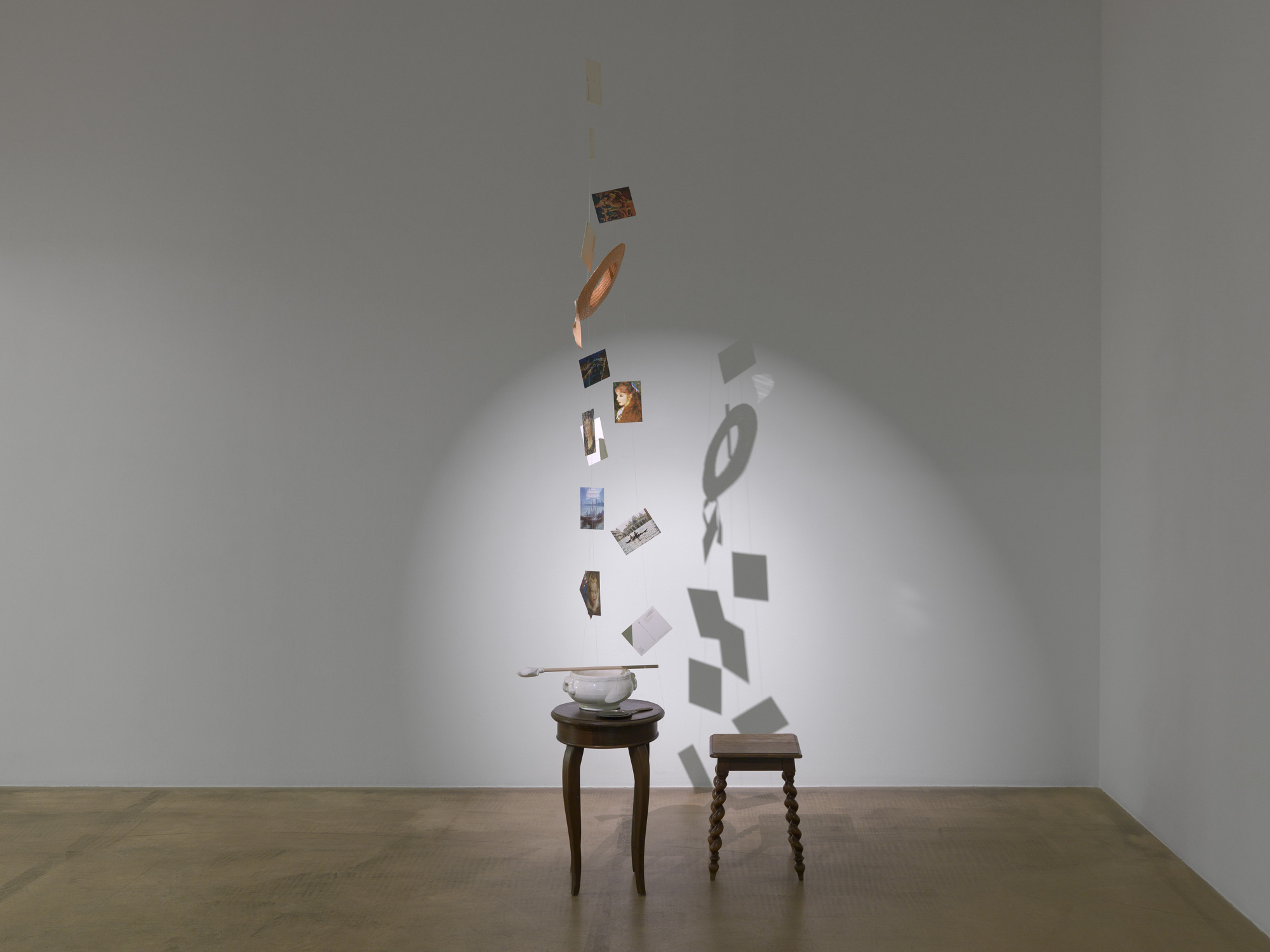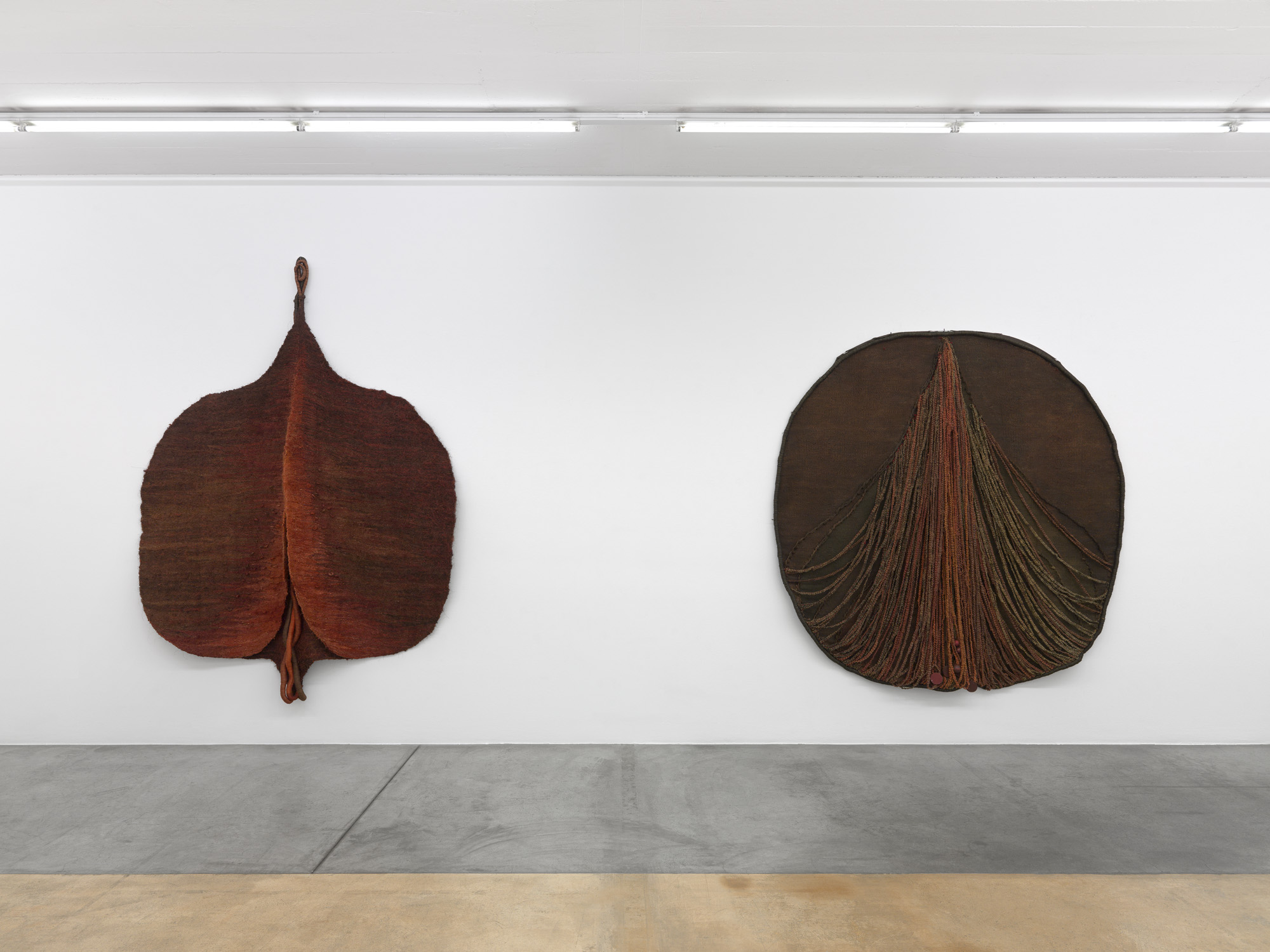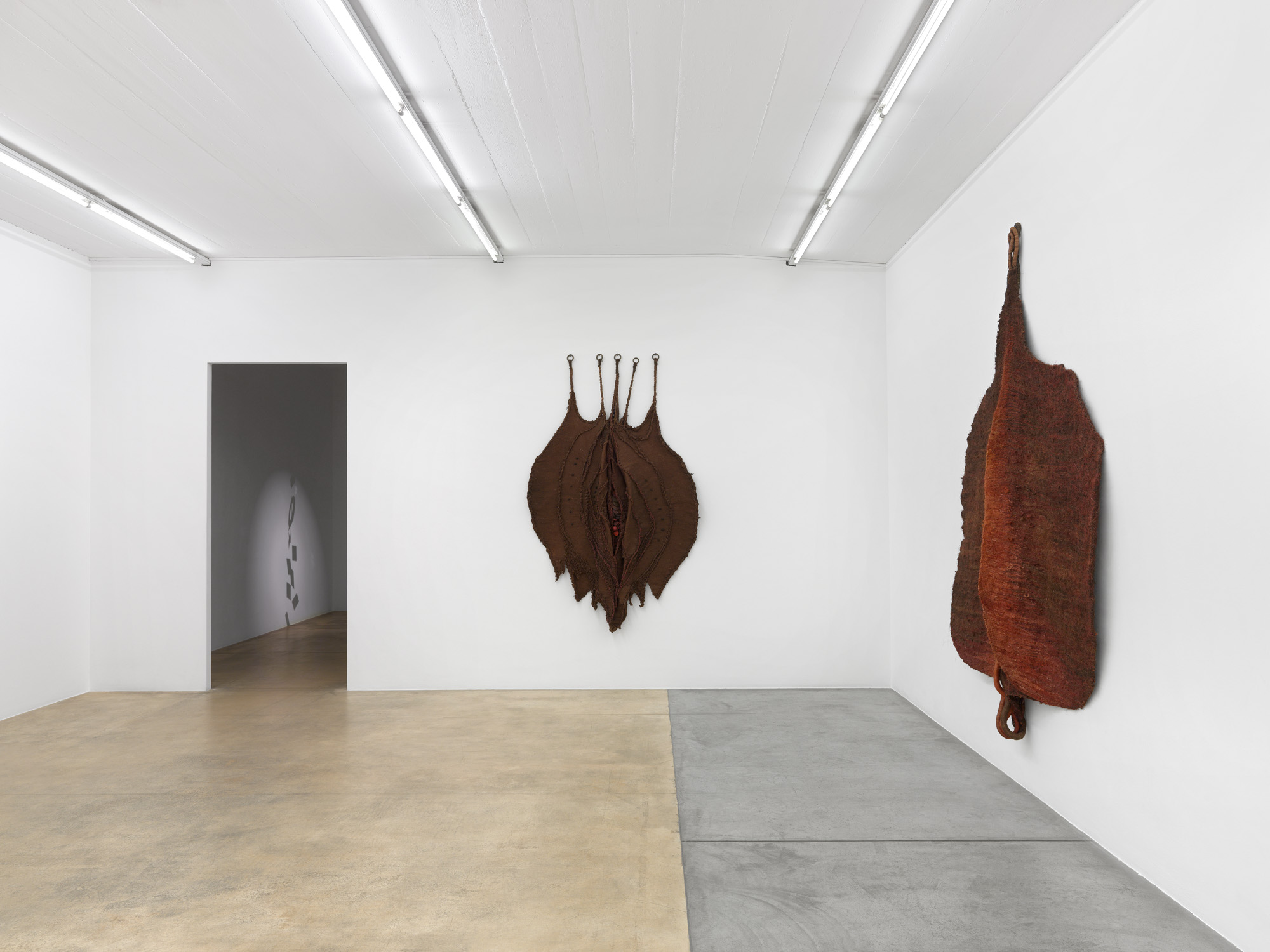Klára Kuchta, a Swiss artist of Hungarian origin, has produced several distinct bodies of work throughout her career, spanning tapestries, performances, photographs, videos, and installations. She has also worked with less conventional media such as hair and lasers.
One part of the MAMCO exhibition linked back to Kuchta’s training as a textile artist, featuring three tapestries she made in the 1970s. This was the point at which she moved to Geneva, drawn by the International Tapestry Biennial held in nearby Lausanne. On the sidelines of the biennial, she exhibited her works at the International Center of Ancient and Modern Tapestry (CITAM), founded by Pierre Pauli in June 1961. For these early tapestries, Kuchta worked primarily with sisal, a material that gave her biomorphic textile sculptures a sturdy, three-dimensional quality. In 1974, her focus shifted from these monumental tapestries—known as Environnements habitables (Habitable Environments)—to pieces more modest in size, this time woven from hair.
Over the following decade, Kuchta produced a body of work incorporating this new material, taking her cues from contemporary artistic practices such as monochrome painting and Conceptual art. Her Tableaux statistiques (Statistical Tables), for instance, depict the results of sociological surveys on hair-care practices in Europe. The series, which has echoes in Fred Forest’s “sociological art” movement, caught the attention of Nouveau Réalisme founder and critic Pierre Restany.
Kuchta spent a period of her career exploring her interest in blond hair, especially the golden and copper-colored tones of strawberry blond. She even dyed her own naturally brown hair blond. Her installation Blond vénitien II (Strawberry Blond II) comprises a series of accessories used by hairdressers from Venice—an allusion to the color’s name in French—including a mirror, water from the lagoon, and hats with holes for hair-drying, plus postcards and a video.
The exhibition also referenced Kuchta’s sporadic relationship with the Ecart group, which published postcards and a book featuring a triangular logo designed by the artist reading “Echantillon(s) de grande valeur” (“Samples of great value”)—in direct opposition to the wording “of no commercial value” that commonly appears on cosmetic samples.
- Exhibition curated by Sophie Costes


